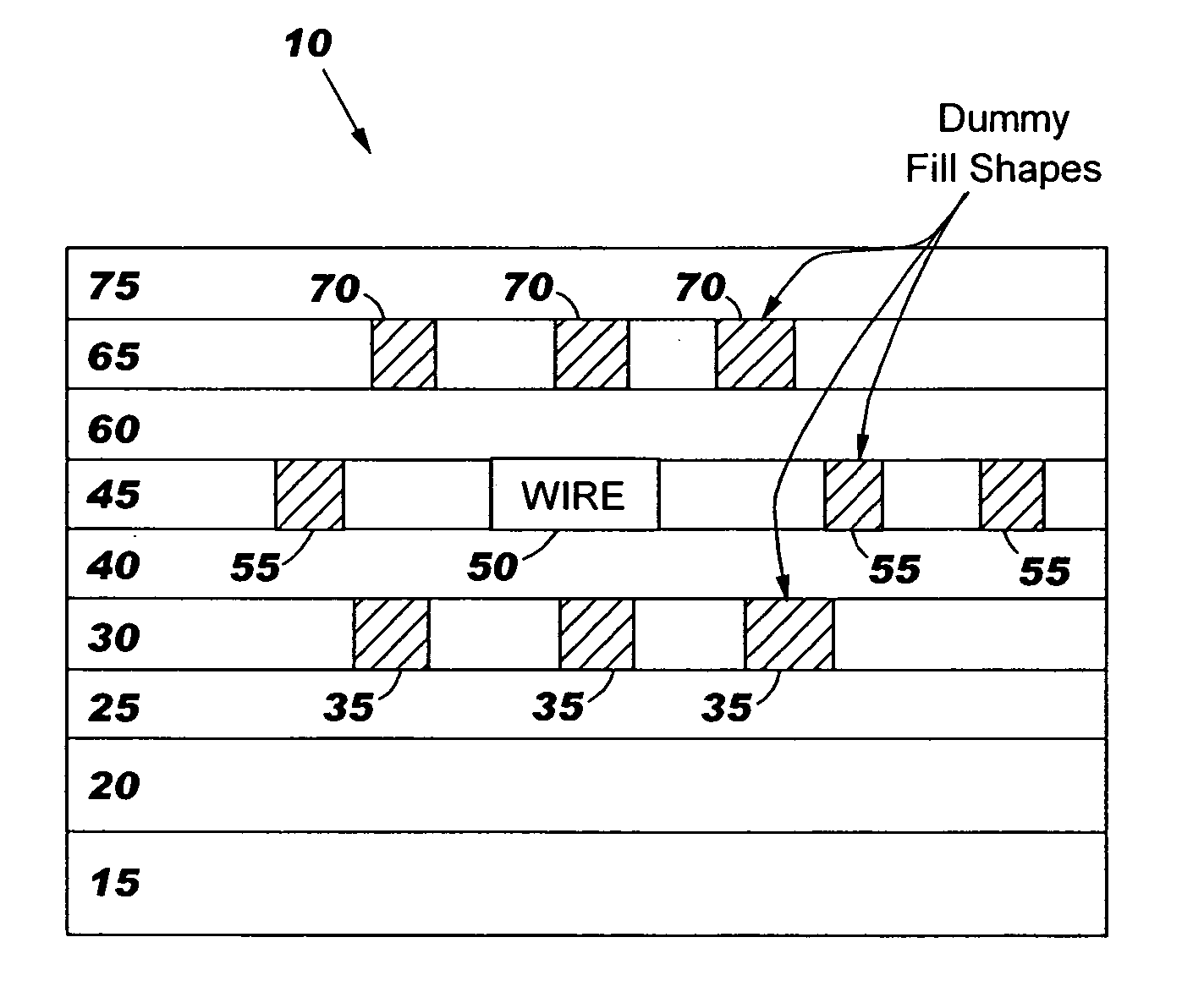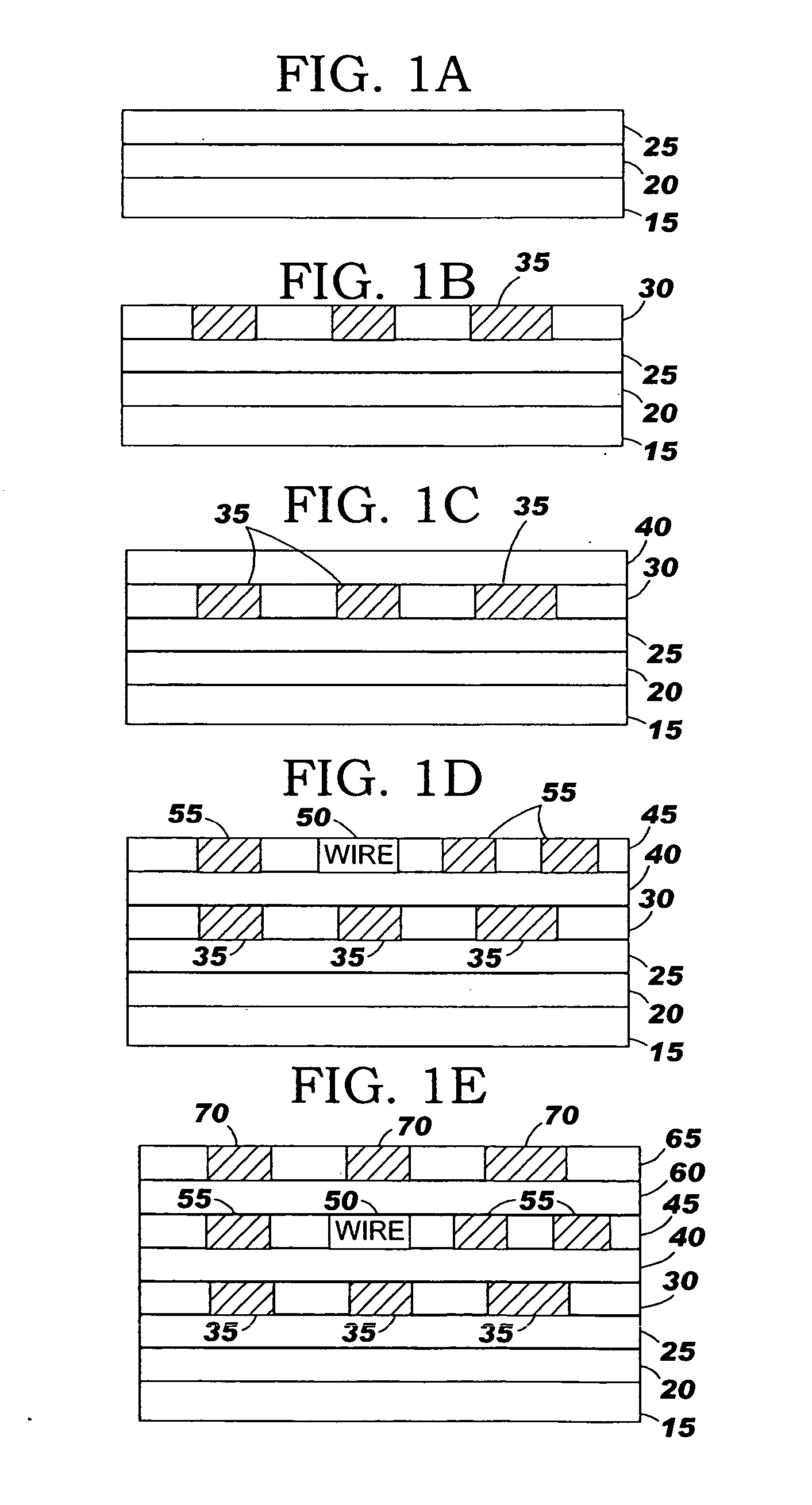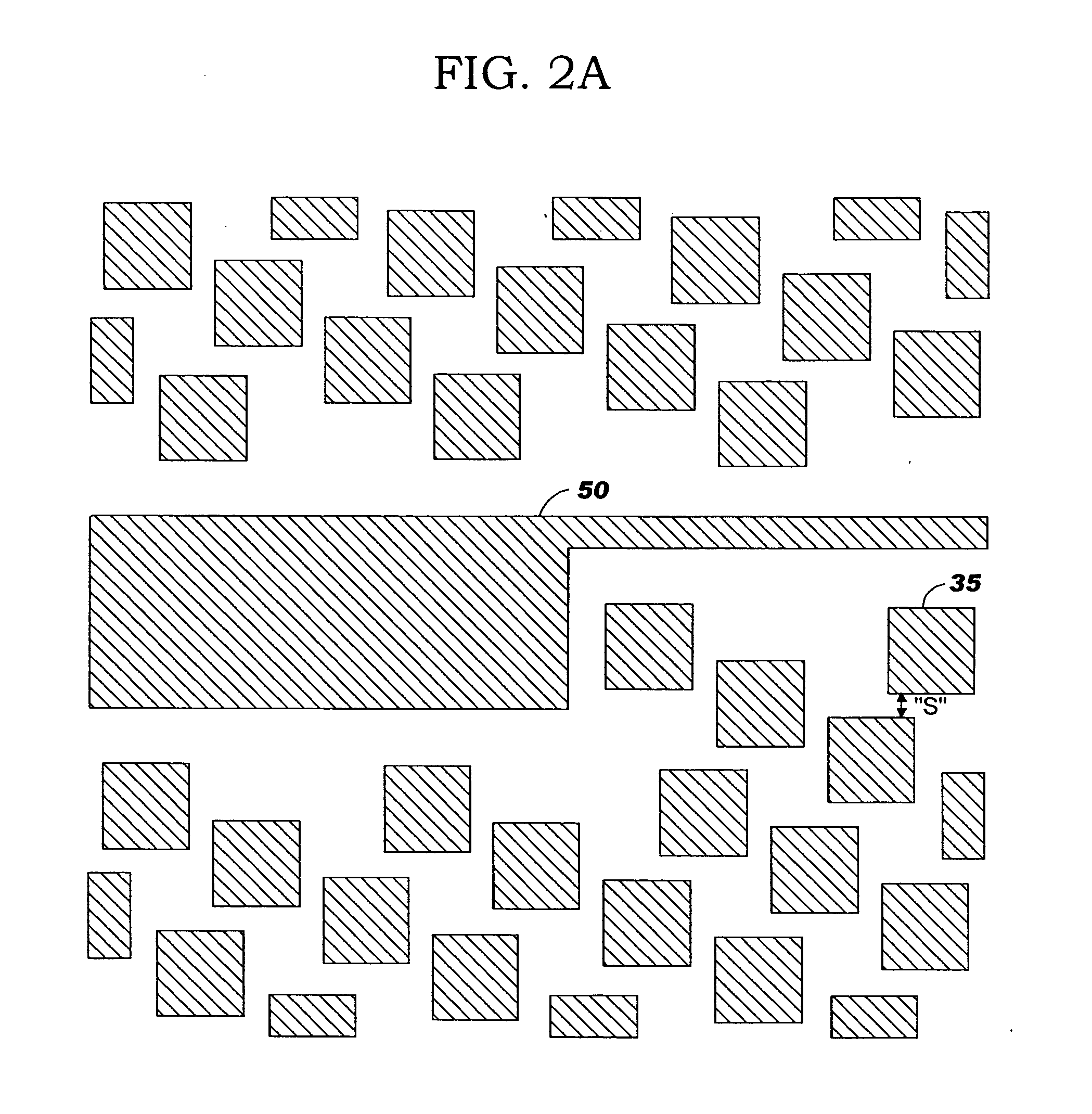Dummy metal fill shapes for improved reliability of hybrid oxide/low-k dielectrics
a hybrid oxide/low-k dielectric and fill shape technology, applied in the direction of individual semiconductor device testing, semiconductor/solid-state device testing/measurement, instruments, etc., can solve the problems of no known method to increase the strength and robustness of the structure, fill shape does not prevent delamination or add strength, and the effect of preventing undue stresses or delamination
- Summary
- Abstract
- Description
- Claims
- Application Information
AI Technical Summary
Benefits of technology
Problems solved by technology
Method used
Image
Examples
Embodiment Construction
[0019] This invention is directed to a semiconductor device and method of manufacture for preventing de-layering of an adjacent oxide layer away from an interconnect. The invention, in one aspect, uses dummy fill shapes to provide a solution to the problem of locally-high stresses and deflections near metallization structures bounding regions initially devoid of metal shapes. This is accomplished by replacing portions of the high coefficient of thermal expansion material (CTE) / low-k material with relatively low CTE metal such as copper. In this manner, the effective CTE of the region is reduced in proportion to the density of the dummy metal fill shapes. It has also been found that the use of the dummy fill shapes improve the mechanical stress and stiffness of the structure since they tend to adhere between the upper and lower dielectric layers. A benefit that is derived from the invention is significantly improved reliability and robustness of the interconnects.
[0020] By use of th...
PUM
| Property | Measurement | Unit |
|---|---|---|
| width | aaaaa | aaaaa |
| width | aaaaa | aaaaa |
| width | aaaaa | aaaaa |
Abstract
Description
Claims
Application Information
 Login to View More
Login to View More - R&D
- Intellectual Property
- Life Sciences
- Materials
- Tech Scout
- Unparalleled Data Quality
- Higher Quality Content
- 60% Fewer Hallucinations
Browse by: Latest US Patents, China's latest patents, Technical Efficacy Thesaurus, Application Domain, Technology Topic, Popular Technical Reports.
© 2025 PatSnap. All rights reserved.Legal|Privacy policy|Modern Slavery Act Transparency Statement|Sitemap|About US| Contact US: help@patsnap.com



